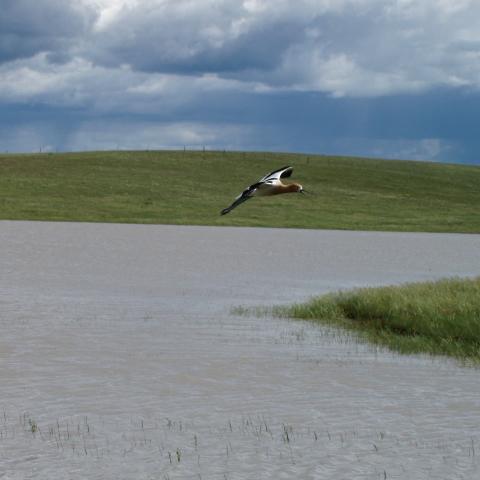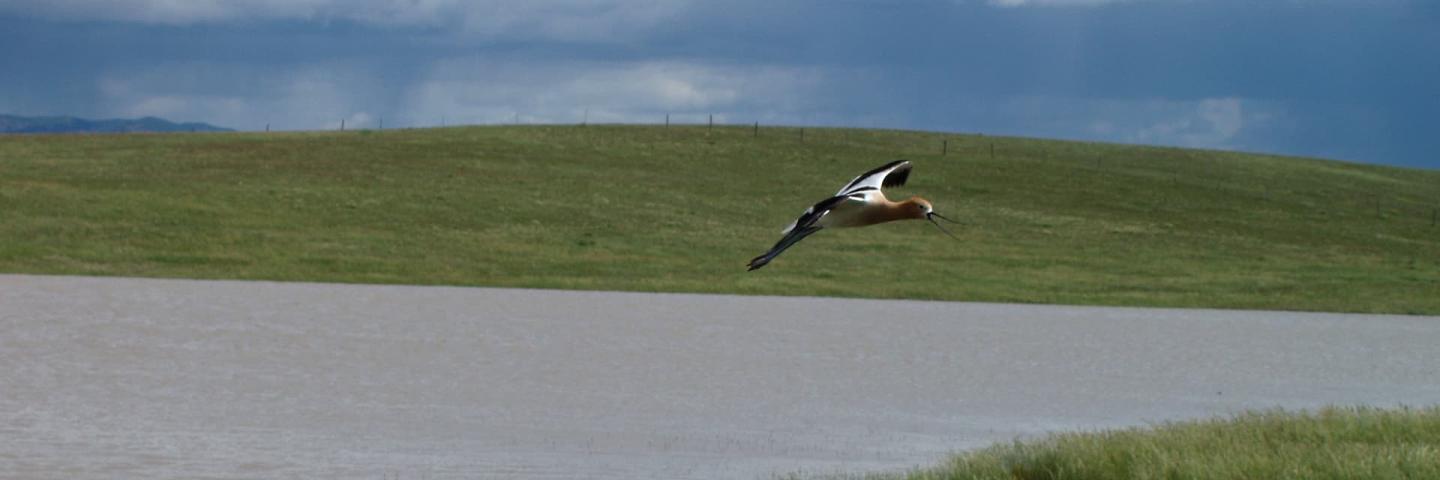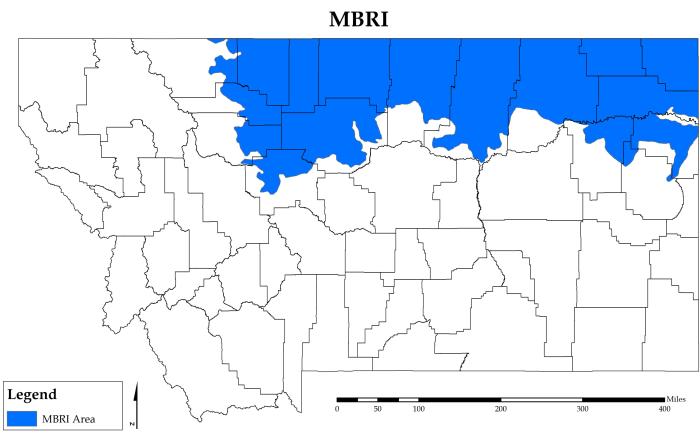
Press Release

The Migratory Bird Resurgence Initiative is an Environmental Quality Incentives Program (EQIP) initiative used by NRCS in Montana.
The Migratory Bird Resurgence Initiative (MBRI), is aimed at preserving, protecting, and improving habitat for migratory waterfowl, shorebirds, neotropicals, and other avian species in the Prairie Pothole Region. Prairie pothole wetlands provide critical food and habitat for these species.
The initiative is focused on unmanipulated wetlands of two acres or less within working cropland as identified on the National Wetland Inventory. NRCS will work with applicants to determine which wetlands are eligible based on the National Wetlands Inventory. Once the wetlands are deemed eligible, producers will then decide which of the three available levels of management is appropriate for their operation.
Cropland is the only eligible land use for this initiative. Agricultural land managers in the Prairie Pothole Regions of Blaine, Cascade, Chouteau, Daniels, Dawson, Glacier, Hill, Liberty, McCone, Phillips, Richland, Roosevelt, Sheridan, Teton, Toole, and Valley counties may be eligible.

Detailed information on conservation practice standards and specifications can be found in Section 4 of the Field Office Technical Guide.
Program applications are accepted on a continual basis. However, NRCS establishes application ranking dates for evaluation, ranking and approval of eligible applications. Applications received after the ranking date will be automatically deferred to the next funding period. See Montana Programs and Application Dates.
NRCS uses these questions to evaluate eligible applications for this project and to prioritize applications for potential funding.
What level/scenario of management will be implemented? Select only one answer.
What percentage of duck breeding pairs does the majority of the PLUs intersect?
The Environmental Quality Incentives Program (EQIP) provides financial and technical assistance to agricultural producers and non-industrial forest managers.
Learn MoreThe Agriculture Improvement Act of 2018 (2018 Farm Bill) includes provisions that address the unique circumstances and concerns of socially disadvantaged, beginning, limited resource, and veteran farmers and ranchers (“historically underserved producers”).
Learn MoreThe 2018 Farm Bill was enacted on December 20, 2018. The Farm Bill continues its strong support for conservation efforts of America’s farmers and ranchers through reauthorization and expanded flexibility of NRCS conservation programs.
Learn MoreContact your local service center to start your application.
Do you farm or ranch and want to make improvements to the land that you own or lease?
Natural Resources Conservation Service offers technical and financial assistance to help farmers, ranchers and forest landowners.

To get started with NRCS, we recommend you stop by your local NRCS field office. We’ll discuss your vision for your land.
NRCS provides landowners with free technical assistance, or advice, for their land. Common technical assistance includes: resource assessment, practice design and resource monitoring. Your conservation planner will help you determine if financial assistance is right for you.
We’ll walk you through the application process. To get started on applying for financial assistance, we’ll work with you:
Once complete, we’ll work with you on the application, or CPA 1200.
Applications for most programs are accepted on a continuous basis, but they’re considered for funding in different ranking periods. Be sure to ask your local NRCS district conservationist about the deadline for the ranking period to ensure you turn in your application in time.
As part of the application process, we’ll check to see if you are eligible. To do this, you’ll need to bring:
If you don’t have a farm number, you can get one from USDA’s Farm Service Agency. Typically, the local FSA office is located in the same building as the local NRCS office. You only need a farm number if you’re interested in financial assistance.
NRCS will take a look at the applications and rank them according to local resource concerns, the amount of conservation benefits the work will provide and the needs of applicants. View Application Ranking Dates by State.
If you’re selected, you can choose whether to sign the contract for the work to be done.
Once you sign the contract, you’ll be provided standards and specifications for completing the practice or practices, and then you will have a specified amount of time to implement. Once the work is implemented and inspected, you’ll be paid the rate of compensation for the work if it meets NRCS standards and specifications.